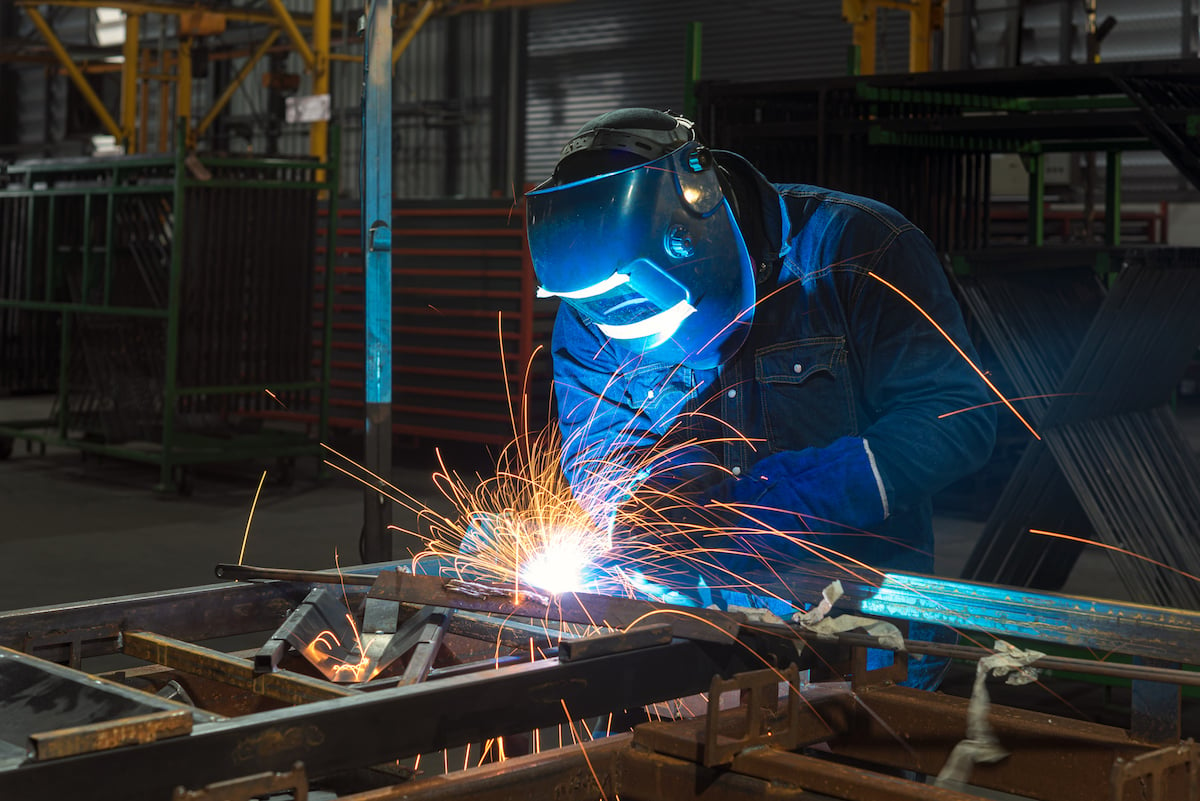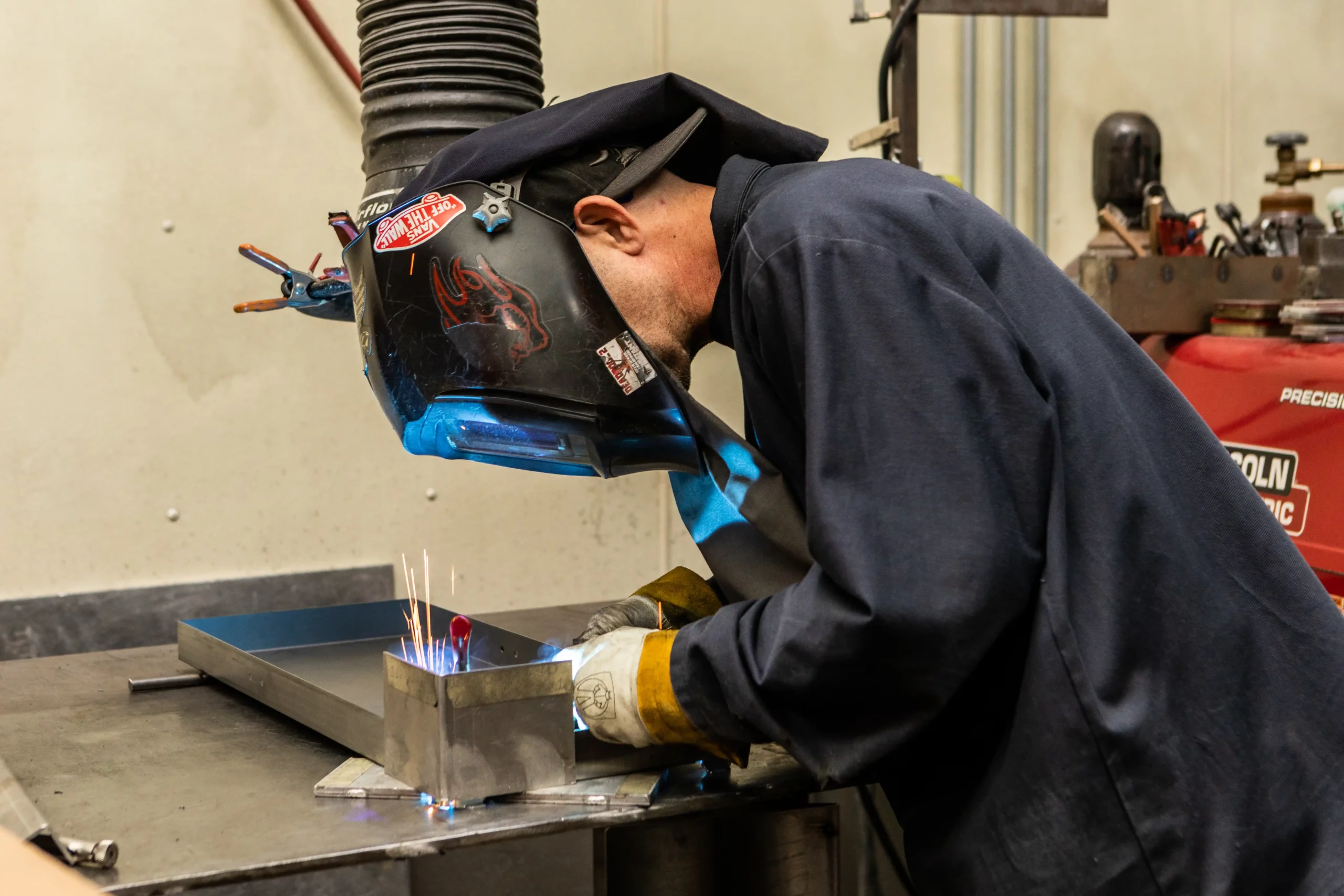Common Welding Repair Issues and Exactly How to Address Them Properly
Welding repairs usually encounter a variety of problems that can endanger the integrity of the last item. Common troubles consist of insufficient penetration, porosity, and misalignment, to name a few. Each issue presents unique challenges that call for details approaches for resolution. Recognizing these concerns is crucial for welders intending to boost their outcomes and skills. This conversation will explore these usual welding repair issues and reliable methods to address them.
Poor Penetration
Poor infiltration takes place when the weld steel falls short to completely fuse with the base material, resulting in weak joints and possible architectural failures. This problem frequently originates from inadequate warm input, wrong electrode angle, or improper welding rate. Welders may experience poor penetration due to a mistake of the needed parameters for a specific product thickness or kind. Furthermore, contamination on the base product's surface can impede reliable bonding, intensifying the problem. To resolve inadequate infiltration, welders should assure appropriate settings on their tools and maintain a clean job surface. Regular evaluation of welds is recommended to identify any kind of deficiencies early, enabling prompt improvements and the avoidance of endangered structural integrity in bonded assemblies.
Porosity
Porosity is a typical issue in bonded joints that manifests as little gas bubbles trapped within the weld metal. This issue can endanger the integrity of the weld, resulting in reduced strength and potential failing under tension. Welding. Porosity usually arises from contamination, wetness, or inappropriate welding strategies, which permit gases to escape right into the liquified weld pool. To resolve porosity, welders ought to ensure correct surface area preparation, keep a tidy functioning environment, and utilize appropriate welding criteria. In addition, picking the best filler product and securing gas can alleviate gas entrapment. Normal assessment and testing of welds can help recognize porosity early, guaranteeing prompt corrective actions are taken, therefore preserving the quality and integrity of the bonded framework
Misalignment
Misalignment in welding can occur from various variables, including improper arrangement and thermal development. Understanding the origin is vital for efficient resolution. A number of correction techniques are offered to realign elements and ensure architectural integrity.
Root causes of Misalignment
Welding misalignment frequently stems from a range of underlying concerns that can endanger structural integrity. One primary reason is inappropriate fit-up of elements prior to welding, which can cause spaces and unequal surface areas. Variations in thermal development during the welding process can additionally lead to distortion, specifically if the products being signed up with have various coefficients of expansion. Additionally, poor clamping and fixturing might fall short to hold elements securely in position, leading to motion throughout welding. Badly maintained equipment, including welding makers and tools, might introduce variances in the weld grain, additional adding to misalignment. Driver error, stemming from inadequate training or experience, can also play a considerable role in creating misaligned welds.

Adjustment Strategies Readily Available
Addressing imbalance successfully requires a mix of corrective strategies tailored to the specific problems at hand. One common technique is the usage of components or jigs to hold elements in the proper setting during welding, ensuring regular positioning. Additionally, pre-heating the products can assist reduce distortion and boost fit-up. For substantial misalignment, mechanical realignment techniques, such as using hydraulic jacks or clamps, can be utilized to fix the position before welding. Post-weld heat treatment may additionally be required to eliminate anxieties triggered by imbalance. Cautious inspection and adjustment during the arrangement stage can stop misalignment problems from becoming significant troubles, advertising a smoother welding procedure and enhancing total structural stability.
Distortion
Distortion is an usual challenge in welding that can occur from various factors, including uneven heating and air conditioning. Recognizing the reasons for distortion is crucial for carrying out reliable prevention strategies. Resolving this issue not just improves structural integrity however likewise enhances the general top quality of the weld.
Root causes of Distortion
When based on the intense warm of welding, products often go through modifications that can bring about distortion. This sensation mainly emerges from thermal expansion and tightening throughout the welding procedure. As the weld area warms up, the material expands; upon cooling, it acquires, which can develop internal anxieties. In addition, irregular heating throughout a work surface can worsen these stress and anxieties, leading to bending or flexing. The kind of product likewise plays a significant duty; metals with differing thermal conductivity and coefficients of development might react in different ways, bring about unpredictable distortions. In addition, bad joint design and poor fixturing can add to imbalance during welding, boosting the possibility of distortion. Recognizing these reasons is crucial for efficient welding fixing and avoidance approaches.
Avoidance Techniques
Efficient prevention strategies for distortion throughout welding focus on regulating warm input and guaranteeing proper joint style. Keeping a consistent warmth input aids to decrease thermal growth and tightening, which can lead to distortion. Making use of strategies such as pre-heating the workpiece can additionally lower the temperature level gradient, advertising consistent home heating. Furthermore, choosing proper joint designs, such as T-joints or lap joints, can enhance security and reduce stress concentrations. Executing correct fixturing to safeguard the work surfaces in place better help in maintaining alignment during the welding process. Staggered welding series can distribute warm a lot more evenly, preventing localized distortion. By using these methods, welders can greatly lower the probability of distortion and boost the total top quality of their welds.
Fracturing
Breaking is an usual issue come across in welding repairs, usually resulting from various factors such as inappropriate air conditioning prices, product option, or poor joint prep work. The next incident of cracks can significantly compromise the stability of the weld, causing prospective failings during operation. To address this concern, welders have to first assess the origin, making sure that materials work and appropriately chosen for the details application. Furthermore, regulating the cooling price throughout the welding process is important; fast air conditioning can generate tension and result in breaking. Proper joint design and prep work also add to reducing the danger. Executing these strategies can improve weld quality and sturdiness, ultimately reducing the possibility of fracturing in completed weldments.

Insufficient Combination
A substantial concern in welding repairs is insufficient blend, which takes place when the weld metal does not effectively bond with the base material or previous weld passes - Montana Mobile Welding and Repair. This issue can result in weak points in the joint, possibly endangering the honesty of the welded structure. Factors adding to insufficient blend consist of insufficient warmth input, improper welding technique, and contamination of the surfaces being joined. To resolve this concern effectively, welders need to guarantee proper pre-weld cleaning and surface area prep work, in addition to adjust their welding specifications to achieve adequate infiltration and blend. Regular assessment during the welding process can likewise help determine incomplete fusion early, enabling for timely corrective measures to boost the general quality of the weld
Overheating
While welding repairs can enhance architectural stability, overheating presents a significant difficulty that can result in product deterioration. Extreme warm throughout welding can change the mechanical residential or commercial properties of metals, leading to lowered toughness, raised brittleness, and bending. This phenomenon is especially crucial in high-stress applications where structural dependability is critical. Recognizing getting too hot can include aesthetic inspections for discoloration or distortion, along with keeping track of temperature throughout the welding procedure. To alleviate the dangers related to overheating, welders need to employ suitable techniques, such as controlling warm input, changing travel speed, and making use of page ideal filler products. best welder for beginners In addition, implementing pre- and post-weld warmth therapies can help bring back material homes and improve the overall high quality of the repair service, making sure lasting performance and safety.
Regularly Asked Questions
What Are the Common Indications of a Welding Defect?

Just How Can I Check My Welds for Top quality?
To check welds for high quality, one can utilize visual inspections, ultrasonic screening, and radiographic techniques. Each method assures architectural integrity, recognizes defects, and verifies adherence to defined requirements, eventually improving the integrity of the bonded joints.
What Safety and security Precautions Should I Take While Welding?
When welding, one need to prioritize security by putting on ideal personal safety tools, making certain correct ventilation, safeguarding flammable materials away, maintaining a tidy work space, and understanding environments to stop injuries and crashes.
Can I Fix a Weld Without Redoing the Entire Joint?
Repairing a weld without renovating the entire joint is feasible, depending upon the damage (Montana Mobile Welding and Repair Belgrade Welding). Methods such as grinding, adding filler material, or making use of a welding procedure can properly attend to particular flaws while maintaining the surrounding structure
What Tools Are Vital for Effective Welding Services?
Essential tools for efficient welding repair work consist of a welding maker, cord brush, grinder, protective gear, clamps, and filler materials. Each device plays a crucial role in ensuring top quality and security during the repair work process. Porosity usually arises from contamination, wetness, or improper welding methods, which permit gases to run away right into the liquified weld swimming pool. Poorly maintained equipment, including welding makers and devices, might introduce inconsistencies in the weld grain, further contributing to imbalance. When subjected to the extreme warm of welding, materials commonly undergo adjustments that can lead to distortion. Fracturing is a typical problem run into in welding repairs, typically resulting from numerous factors such as incorrect cooling prices, product option, or inadequate joint preparation. A significant issue in welding repairs is insufficient fusion, which takes place when the weld steel does not adequately bond with the base material or previous weld passes.
Comments on “How cracks form in welding and how Montana Mobile Welding and Repair prevents them”